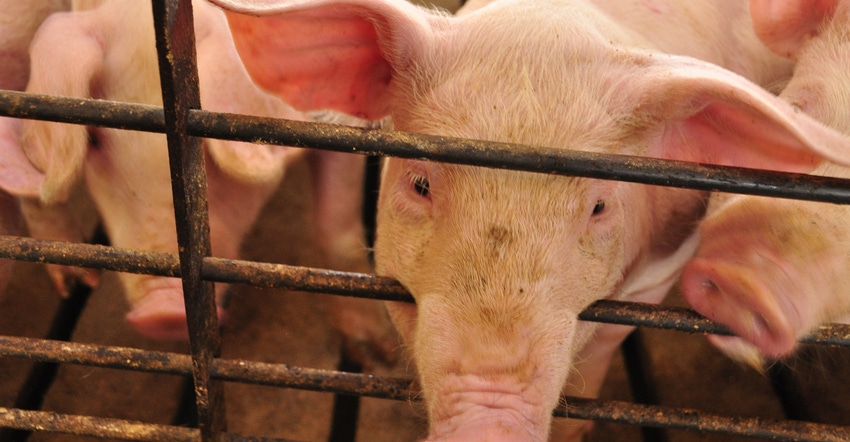October 18, 2018

December 1998 cash hogs averaged less than $15 per live cwt. That was the lowest price in current dollars since late-1964. Adjusted for inflation, it was the lowest ever in U.S. history.
Pork producers found dirt-cheap hogs particularly galling, as retail pork prices were near record high and pork demand was strong. In fact, 1998 retail pork demand was 7% higher than in 1997 and the highest since 1992, based on a demand index that considers per capita consumption and inflation-adjusted prices.
U.S. pork exports from January through September 1998 were 26% higher by volume than during the same period in 1997. October through December 1998 exports were down 2% compared to the 1997’s fourth quarter. Still, 1998 pork exports were up 18% year over year.
Dismal hog demand drove price wreck
Analysts attribute the price collapse primarily to faltering demand for hogs due to a significant cut in packer capacity. The 10% rise in 1998 production should have brought just a 20% decline in the hog price from the 1997 average of $52 per live cwt. Prior to 1998, the long-standing rule was a 1% change in production led to a 2% change in price. Instead, prices fell by an alarming 38% — a ratio of almost 4-to-1. The culprit turned out to be a rather sudden 8% drop in hog slaughter capacity. Several U.S. packing plants closed or reduced capacity. The Thorn Apple Valley plant in Michigan and the Dakota Pork plant in South Dakota closed, and Smithfield in North Carolina reduced capacity.
The market hit a packer capacity constraint, despite most plants operating double shifts, Saturdays, and in some cases Sunday. Accelerated plant operating and added labor costs further depressed hog prices. Beginning in late September 1998, weekly hog slaughter exceeded 2 million head for 12 consecutive, non-holiday weeks. In 1997, only the week before Christmas recorded a slaughter of 2 million head.
What began as a slaughter capacity crisis quickly created a liquidity crisis for most pork producers. It then ballooned into a business crisis for U.S. pork production.
Keep eye on packer capacity
While no one is predicting a repeat of 1998, slaughter capacity will be a factor this fall. Steve Meyer, economist with Kerns and Associates, has maintained a detailed database of hog slaughter plants and capacity for many years.
His survey pegs the weekly slaughter capacity at 2.691 million head per week for fall 2018. This is up 2% from fall 2017. In 2017, the largest weekly slaughter was 2.576 million head for the week ending Dec. 16. Fourth-quarter hog slaughter in 2018 could be up as much as 5% to 6%. The peak weeks of slaughter could pressure packing capacity limits. Saturday operations will be an important factor for slaughter capacity.
Packer capacity is an issue to watch. Tightness could significantly impact hog prices. But other factors could impact hog prices this fall and beyond.
Domestic consumer demand for pork is strong and is expected to continue. But prospects for further domestic demand growth are limited. Therefore, export markets will have to absorb the rising production.
Access to foreign markets will be critical to preventing a domestic supply glut and deterioration in margins for both producers and processors. Trade issues with Mexico and Canada have improved, less so with China.
Schulz is the Iowa State University Extension livestock economist.
What drives live hog demand?
By John Otte
Demand for a 280-pound live hog delivered to a consumer’s door step is almost nonexistent. Consumers want ready-to-prepare pork cuts. Some prefer their pork in full-course, ready-to-microwave entrees. Demand for live hogs is derived from the demand for pork products.
The market attempts to find prices for the various end-products that will clear the market. That is, move end-products at rates that neither create shortages or leave surpluses.
Oversimplified, the market attempts to find some weighted average of the various end products to flow upstream to determine value of the various primal cuts. Similarly, price signals from the primals flow upstream to help determine the value of the live hog. The process is inexact. Factors driving prices are highly fluid.
Generally, price differences along various links in the supply chain hold in relatively narrow ranges. Margins widen and narrow to help regulate product flow. Most of the time this is simply finetuning.
However, the chain is no stronger than its weakest link. The key factor driving the 1998 cash hog price wreck was packers flat out ran out of slaughter capacity. They slashed cash hog bids to attempt to regulate, that is staunch, the flow of hogs to packing plants.
Ever since, analysts have been tracking, and pork producers have been watching, expected fourth-quarter hog slaughter and capacity. That’s a good thing. When the industry anticipates problems, it can adjust to avoid them.
Otte is the retired economics editor of Farm Progress publications.
About the Author(s)
You May Also Like






